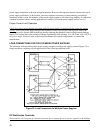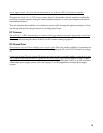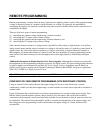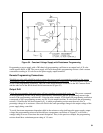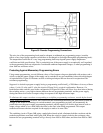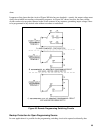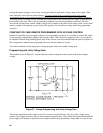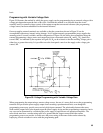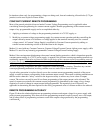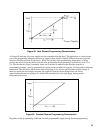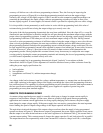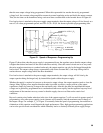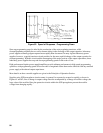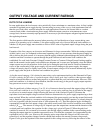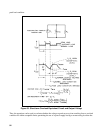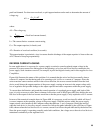
86
In situations where only low programming voltages are being used, forward conducting silicon diodes (0.7V per
junction) can be used in place of zener diodes.
CONSTANT CURRENT REMOTE PROGRAMMING
Most of the general principles discussed under Constant Voltage Programming are also applicable when
considering remote programming for constant current supplies. Remote programming of the constant current
output of any programmable supply can be accomplished either by:
1. Applying a resistance of voltage to the programming terminals of a CV/CC supply, or
2. Modifying a constant voltage programming supply for constant current operation and then controlling the
output current by means of a resistance or voltage applied to the terminals normally used for constant
voltage control. A Constant Voltage Supply is modified for Constant Current operation by adding an
external current monitoring resistor as described later in this chapter.
Method 1 is used with any Constant Current or Constant Voltage/Constant Current Agilent power supply, while
Method 2 is used for any remotely programmable Constant Voltage/Current Limiting supply.
Method 1 has one important disadvantage: the normal current limiting protection, which is dependent upon the
constant current setting of a CV/CC power supply, is negated if the constant current programming terminals are
accidentally opened. Particular care must be taken in the design of the constant current programming network
to insure that no open circuit condition can exist even for a short interval of time, because such an open circuit
will program the power supply to an output current in excess of its rating -- with almost certain destruction of
the series regulating components and other components within the regulator circuitry. Therefore any constant
current programming mechanism involving switches must use make-before-break switches.
A good safety precaution is to place directly across the constant current programming terminals of the power
supply a control resistance corresponding to the maximum output current. The remote switching mechanism can
then be used to shunt this "safety" resistor to the degree necessary to achieve any lower values of output
current. The resistor can only be used if non-linear programming of the output current can be tolerated. The
speed of response associated with constant current programming is determined by the output voltage change
required as a result of change in output current being programmed. The equations given in Figure 61 are
applicable in determining the time required for the newly programmed value of constant current to be achieved.
REMOTE PROGRAMMING ACCURACY
Figure 59 shows the relationship between programming resistance and output voltage for a power supply with
perfect remote programming. Zero ohms across the programming terminals results in exactly zero volts output,
and all other values of programming resistance result in the output voltage predicted by the programming
coefficient K
P
.



